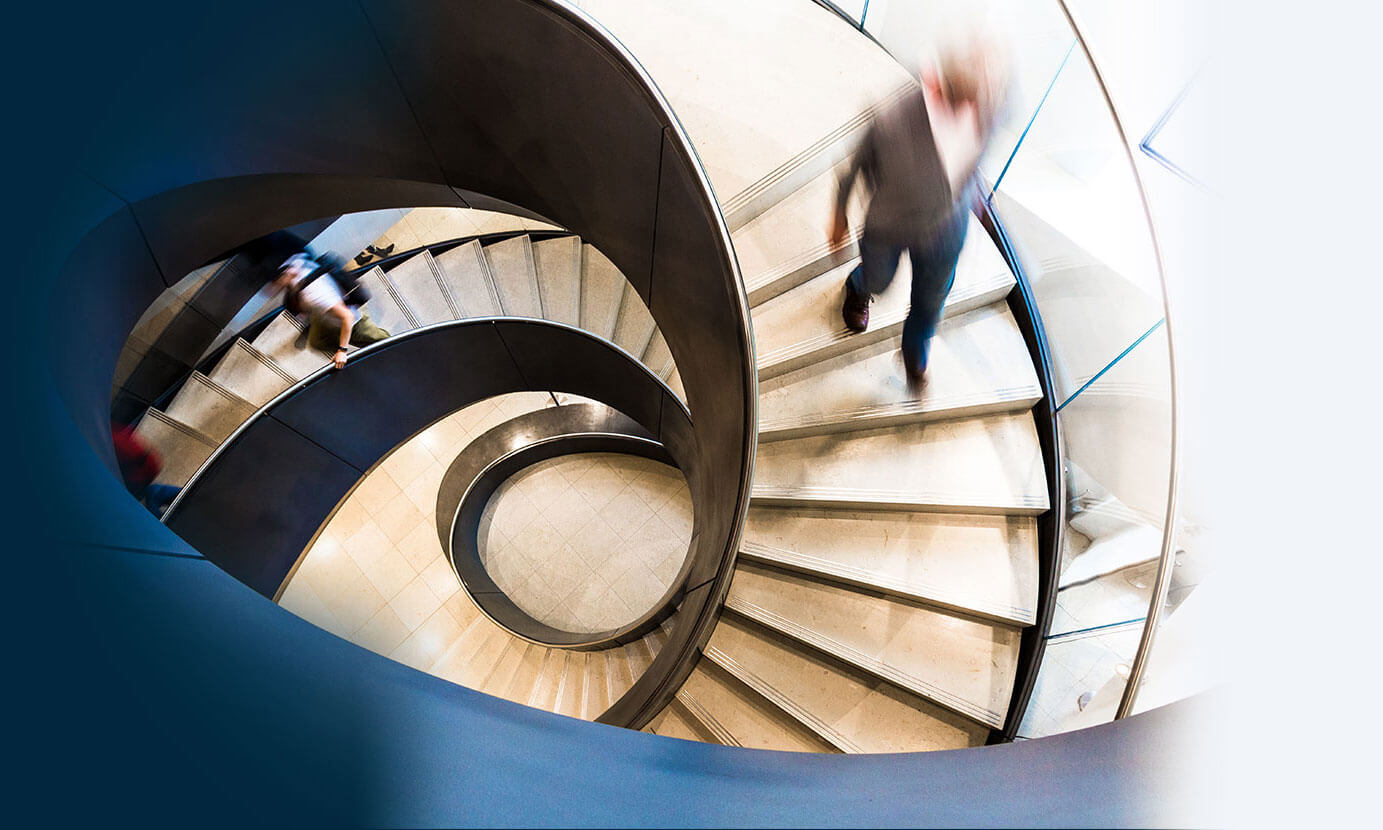Eyelids Thousand Oaks
As we age, the muscles and other structures surrounding the eye loosen and become lax. The eyelid skin stretches, wrinkles, and becomes redundant. In addition, the various deposits of normal fat shrink and deflate. This can lead to a hollowed-out look of the upper eyelid and loss of the normal smooth junction between the lower eyelid and the cheek. These changes have a profound effect on how old we appear.
Before & After Photos
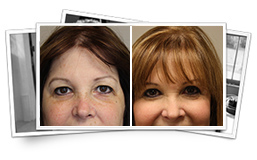 Eyelid Surgery
Eyelid Surgery
At the Kryger Institute of Plastic Surgery, we have experience in a vast array of surgical and non-surgical procedures. Click below to see some before and after photos of mommy makeovers.
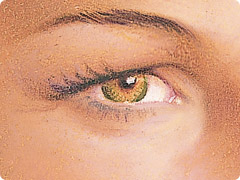 Typical appearance of excess upper eyelid skin.
Typical appearance of excess upper eyelid skin.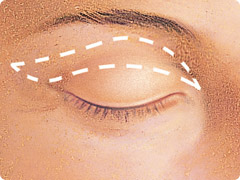
A small amount of skin is removed from the upper eyelid.
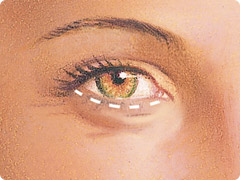
The lower eyelid incision can be hidden just below the lashes or the procedure can be done entirely without any external scars.
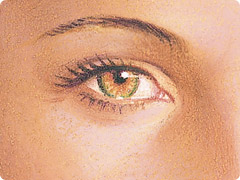
After surgery, the eye looks youthful and refreshed.
Eyelid surgery, or blepharoplasty, encompasses a wide array of procedures that share the common goal of restoring the eyelid region to its more youthful shape and appearance. This is achieved through a combination of techniques that remove excess skin and fat from some areas, add fat to other areas, and tighten structures that have stretched out and loosened. The surgeons at the Kryger Institute offer a multitude of eyelid techniques and will choose the procedure that is best suited for you.
Who is a good candidate for eyelid surgery (blepharoplasty)?
If you have aging changes in the eyelids as described above, you may be a candidate for eyelid surgery. Younger patients often need only lower eyelid rejuvenation, whereas older patients usually require treatment of both the upper and lower eyelids. People with chronically dry eyes, chronic eye irritation from allergies, prominent eyes, certain medical conditions (e.g. Graves’ disease), and those who have undergone a previous blepharoplasty procedure are at an increased risk of developing a complication. Your surgeon will discuss all the risks of surgery with you and determine what procedure is safest for you.
What is eyelid ptosis and what can be done for it?
The upper eyelid is opened by the combined action of two muscles. For a variety of reasons, these muscles can lose some of their effectiveness and function, resulting in a droopy upper eyelid that covers the eye. This eyelid ptosis can make a person look tired, and can even interfere with vision. Many older patients have eyelid ptosis due to the loosening of the eye-opening muscles or due to a disconnection between the muscle and the eyelid. This type of ptosis termed senile ptosis (or levator disinsertion), can be treated surgically in conjunction with a cosmetic blepharoplasty procedure.
Does Insurance cover eyelid surgery?
Cosmetic eyelid surgery is not covered by insurance, however, ptosis repair may be covered if there is documentation of the condition impairing vision or causing other symptoms. Our insurance experts will work closely with your insurance carrier to determine if you are eligible.
Are there any non-surgical alternatives to surgery?
Since some of the aging changes of the eyelid involve atrophy of fat in the lower eyelid and a loss of the smooth lower lid-cheek junction, filling this area with fat or some other filler (e.g. Restylane) can have a dramatic effect on the appearance of the lower lid. Your surgeon will determine if you are a good candidate for this approach. In addition, fine wrinkles and minor blemishes of the lower eyelid can be treated with a chemical peel.
Preparing for Surgery
Tell your surgeon about any medical problems you have, and any problems you may have had with surgery in the past. You should mention any history of dry eyes, contact lens use, allergies, or other problems with your eyes. A history of bleeding problems, nausea with surgery and high blood pressure are all important to disclose to your surgeon because these are risk factors for post-surgical bleeding. Inform him what medications you take-both prescription and non-prescription (including herbs and dietary supplements). You will be told which medications to stop and which to take before surgery. Blood-thinning medication, aspirin, and anti-inflammatory medications such as ibuprofen and Aleve must be stopped for 7 days before surgery. Finally, you must strictly follow the instructions about when to start fasting before surgery (usually at midnight). If you get sick or have any health issues in the days before surgery, please notify the office at once in case we have to postpone your operation.
The surgery and the incisions
The operation itself takes 1-3 hours depending on what type of eyelid surgery you undergo. Most procedures are performed in the operating room, however, some techniques can be done in the office. On the morning of surgery, your surgeon will answer any last-minute questions you may have and discuss the planned incisions. In most cases, the incisions can be hidden in the natural skin creases of the upper and lower eyelids. Some lower eyelid procedures can be performed entirely through the inner portion of the lid (trans-conjunctival blepharoplasty) without any visible incision.
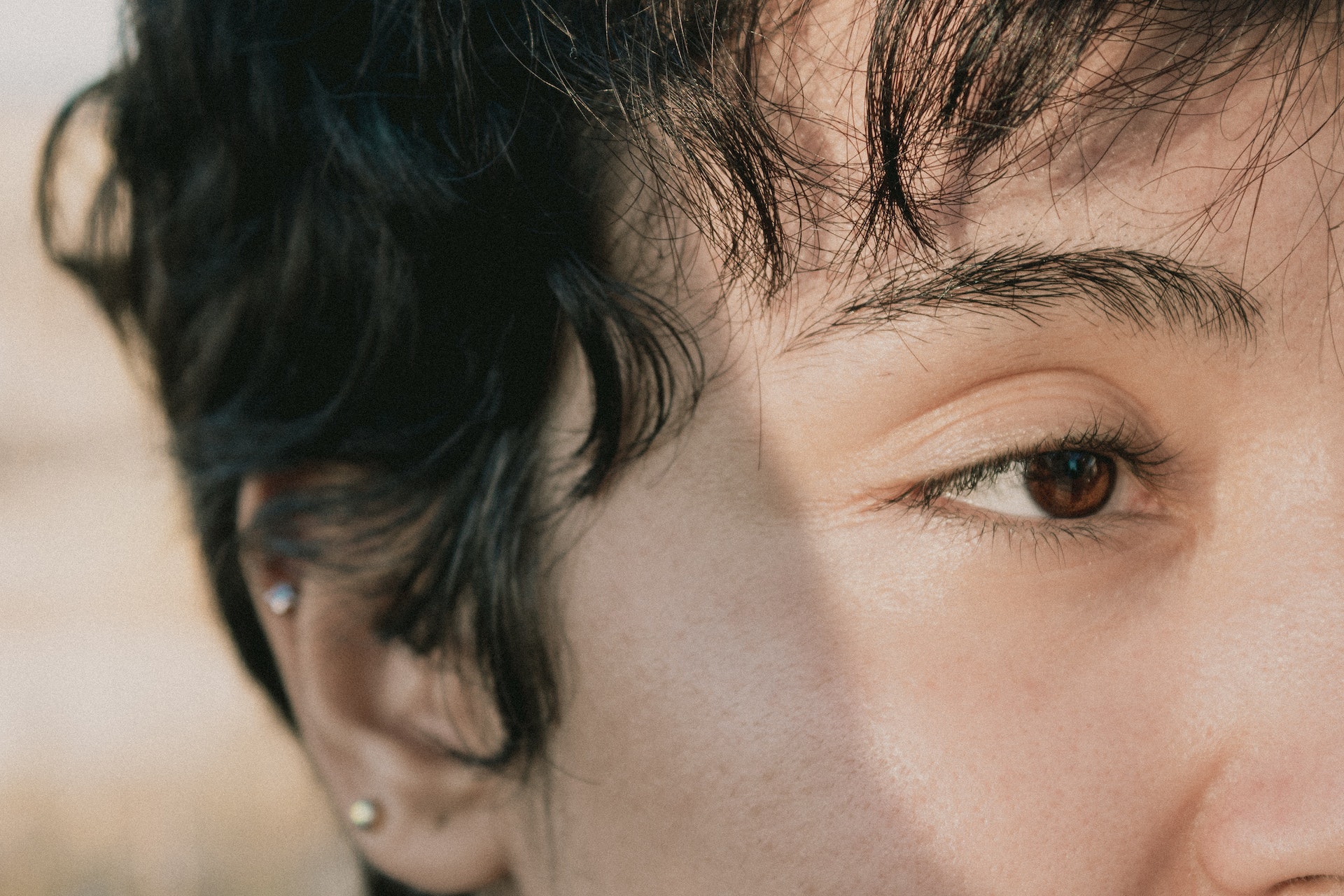
The anesthesia
All eyelid surgery can be performed under “twilight” anesthesia or general anesthesia. Twilight anesthesia consists of intravenous sedation and pain medication that keeps you relaxed and sleepy during the surgery. In addition, the surgeon uses local anesthesia to numb the eyelids. General anesthesia involves going completely to sleep with a breathing tube in your throat. There is a slightly higher risk of nausea and vomiting after general anesthesia, however, both techniques are extremely safe. Your surgeon will discuss the anesthetic options with you before surgery.
Eyelids FAQs
Can other procedures be performed at the same surgery?
Yes. The surgeons at the Kryger Institute routinely perform other procedures in conjunction with eyelid surgery. Most commonly, a forehead lift (brow lift) can be performed at the same time to achieve maximum restoration of your youthful appearance. Other procedures such as a facelift, fat injections, or fillers can also be performed at the same time. The main limiting factor in performing multiple procedures at one operation is the increased length of surgery and the risks associated with this.
What kind of dressings are there?
There are no dressings required. Your stitches are removed about 5 days after surgery.
Can you go home on the day of the surgery?
Yes, eyelid surgery can be done safely as an outpatient, and most patients will be able to go home the same day. Some patients may prefer to spend a night in the hospital if they have young children at home or live alone and do not have any help at home.
How much pain is there after surgery?
Pain from eyelid surgery is usually minimal. It is worst in the first 24 hours, but then it rapidly improves. It is impossible to predict a person’s pain level. If you have done well with surgery in the past, you will likely be fine after this surgery. Many patients have adequate pain control with extra-strength Tylenol. Our surgeons have a lot of experience treating pain and have published scientific articles and written book chapters about anesthetics and pain control. They will do everything possible to minimize your pain, including using pain pumps after surgery and utilizing all the newest pain medication.
What about swelling and bruising?
Swelling and bruising are normal signs of the healing process. They occur after any surgery to varying degrees. Swelling peaks at about 48 hours, and then rapidly decreases. By the end of the first few weeks, most of the swelling is gone. By 6-8 weeks, all of the swellings have diminished. Bruising is worst the day after surgery and then rapidly gets better. It is usually gone for two weeks. For the less invasive blepharoplasty procedures offered at the Kryger Institute, swelling and bruising can be so minimal that some patients look “normal” within a few days. Ice should be used liberally for the first 48 hours to keep the swelling and bruising to a minimum.
What restrictions are there?
You can shower the day after surgery, but you should not take a bath, use a hot tub, or go swimming for at least two weeks. The majority of patients feel good enough to return to most activities after a few days. Strenuous activities such as jogging, aerobics, weight training, sit-ups, and sex should be avoided until two weeks after surgery.
When can I travel?
Traveling after surgery (air travel, long-distance car trips, train rides, etc) should not be done before you have had your first postoperative visit. Typically, this occurs five days after surgery for suture removal. Patients who are at high risk for developing a blood clot should not travel until instructed by their surgeon. Short car trips under 60 minutes can be done before the first visit. A good rule of thumb is when you are off the stronger pain medication and can get up without assistance you are ready to go for a short drive. You should not drive the car yourself, however, until your surgeon gives you clearance for this.
When can I go back to work?
This, of course, depends on the kind of work you do. Most people go back to work after a week. Sedentary jobs, such as computer work or talking on the phone can begin even sooner. If you have a strenuous job that involves a lot of lifting or physical activity, you may have to wait two weeks until you are ready for work. Please review the restrictions for further guidelines about getting back to work.
What kind of scars can I expect?
The scars from the eyelid usually heal extremely well and are rarely visible with the eyes open. Scarring, however, is an unpredictable part of any surgery. It is impossible to cut through the full thickness of the skin and not have a scar. Our surgeons have published numerous scientific papers about the scarring process and wound healing, and will do everything possible to minimize scarring. To a large extent, however, scarring is determined by your genetics. If you are prone to hypertrophic (wide, raised) scars or keloids, make sure to inform your surgeon ahead of time. Our surgeons will use all the available techniques to minimize your scars based on their extensive research experience on hypertrophic scarring.
Your scars will be firm and pink for at least six weeks. After six weeks, the scars are very strong and can withstand any activity. Then they may remain the same size for several months, or even appear to widen. After several months, your scars will begin to fade, although they will never disappear completely. It takes about six months for a scar to completely heal. Some of the lower eyelid procedures can be done directly through the conjunctiva of the eye, resulting in no visible scar after surgery.
What if I have a problem? When should I call the office?
The Kryger Institute welcomes calls from patients. If you have any concerns at any time, please feel free to call our office. If it is an emergency, the answering service is available 24 hours a day, including weekends and holidays. There is always a plastic surgeon on call. Your surgeon will discuss all the risks and potential complications with you before surgery. You will receive detailed instructions about situations that warrant a call to the office.
How Much Does Eyelid Surgery Cost
The overall cost of a Eyelid Surgery is affected by anesthesia fees, hospital fees, post-surgery garments, and medications. Price is also impacted by medical tests, surgeon’s fees, and the exact techniques employed.
Schedule a Consultation
Contact Kryger Institute of Plastic Surgery today to schedule a consultation for your Eyelid Surgery in Thousand Oaks. We will take the time to guide you through the entire process, ensuring results that fully satisfy your aesthetic needs. Contact us today!
Related Blog Posts

Blepharoplasty: A Popular Way to Treat Sagging Eyelids
Eye lid sagging can make the face look old and tired all the time. Blepharoplasty is the ideal remedy and is often used to provide cosmetic correction for sagging eyelids. Also called … Read More

Blepharoplasty Thousand Oaks
The Eyelid Lift, also known as Blepharoplasty, is a popular rejuvenation procedure used to help men and women achieve a more youthful appearance around the eyes. As we get older, many of us may notice… Read More

